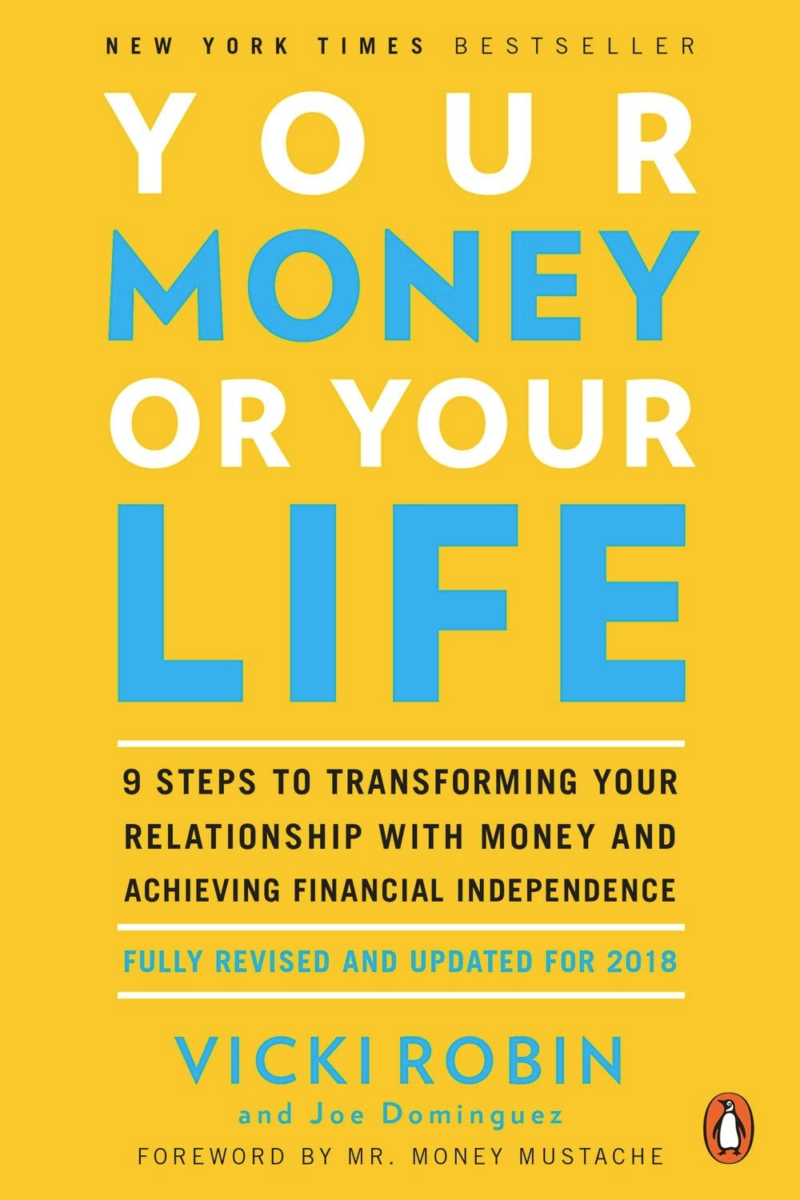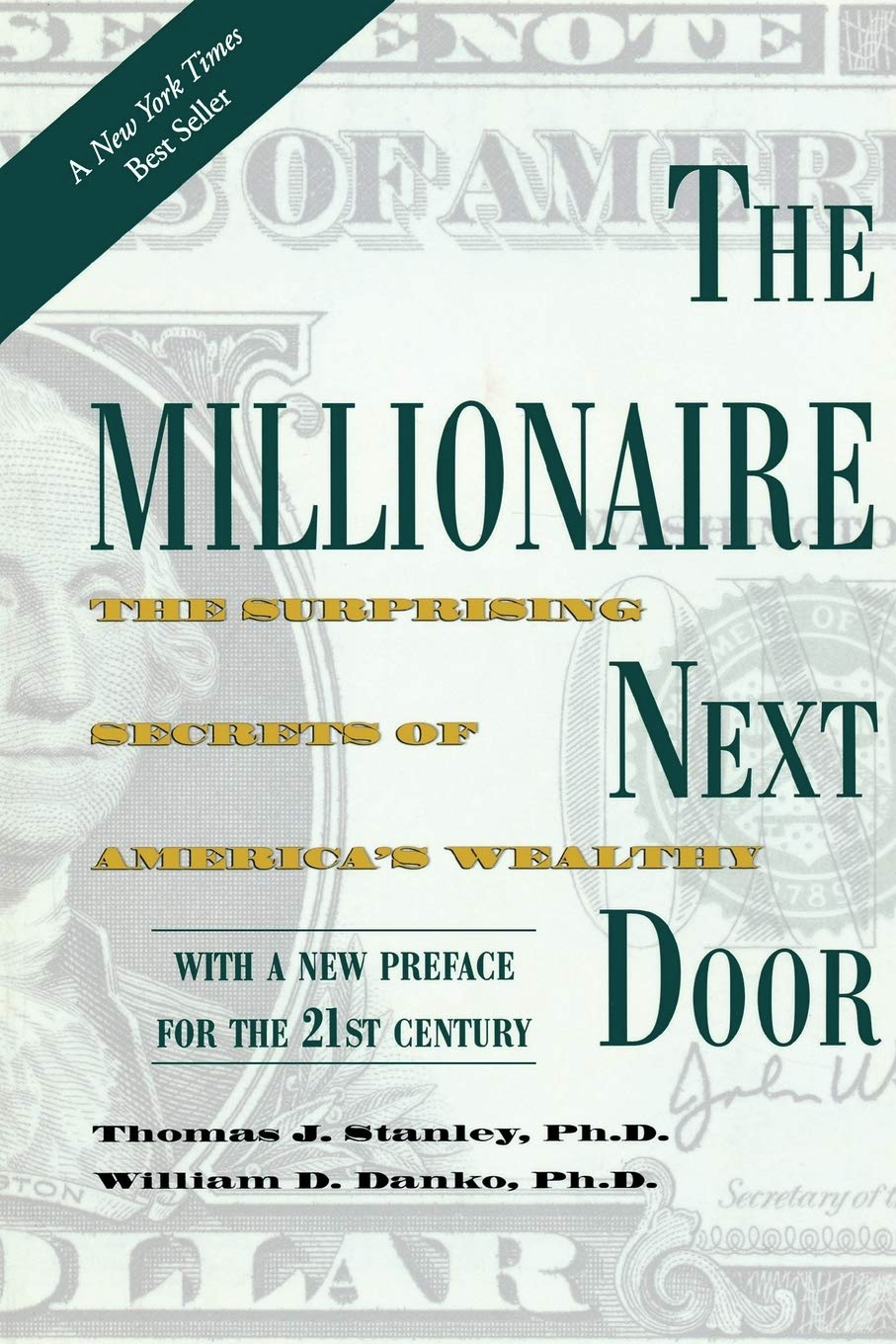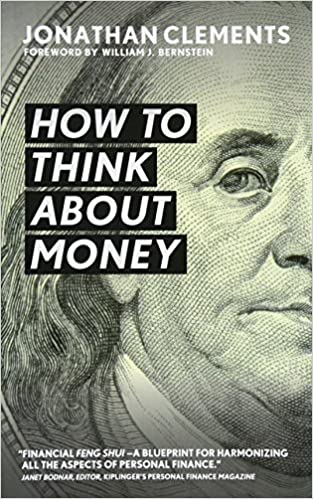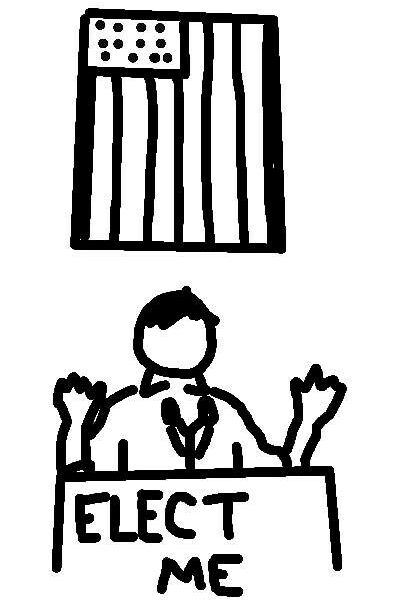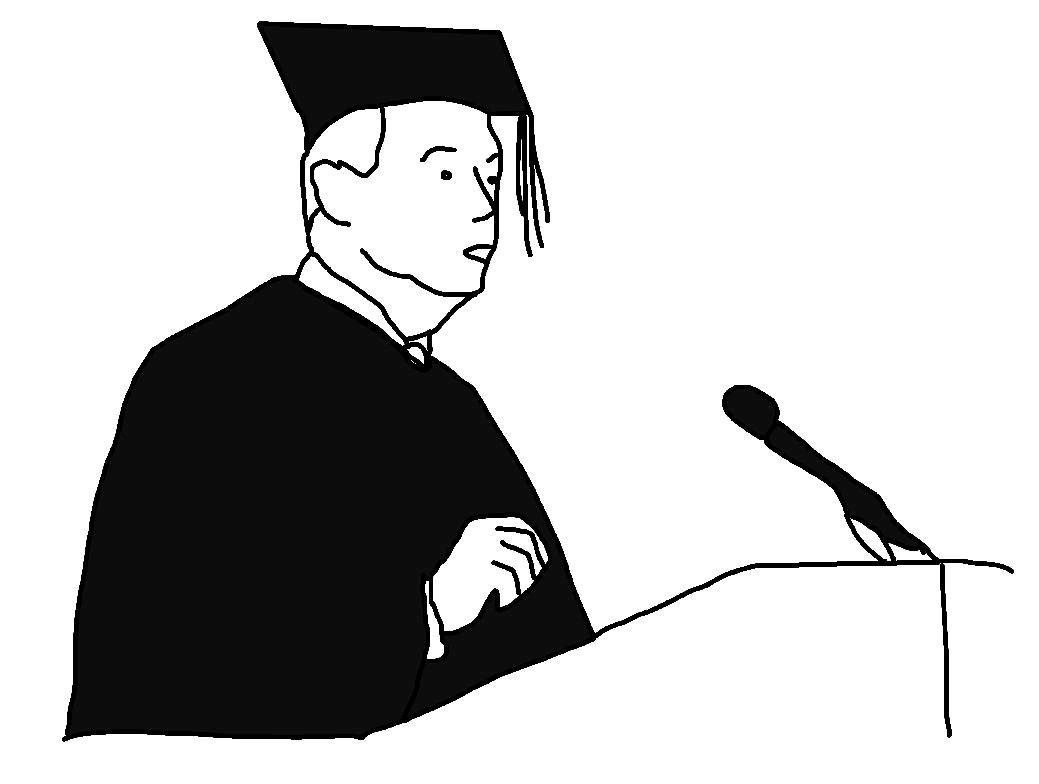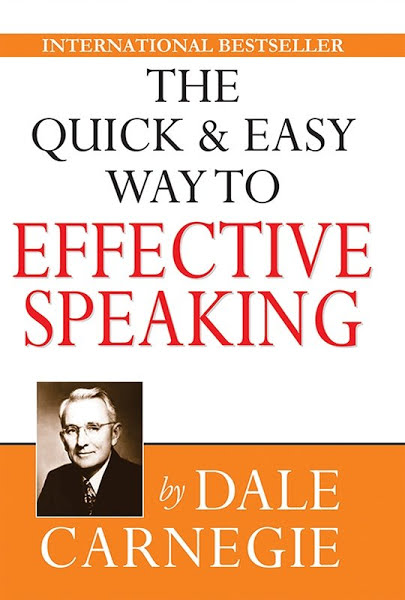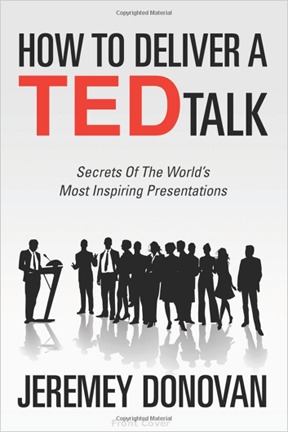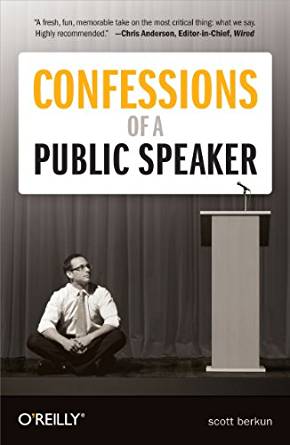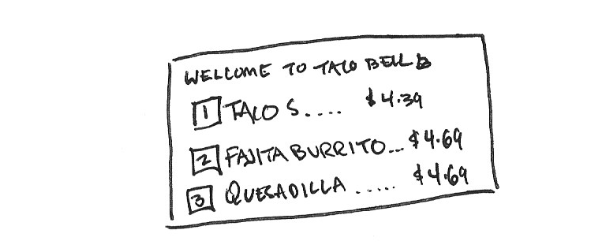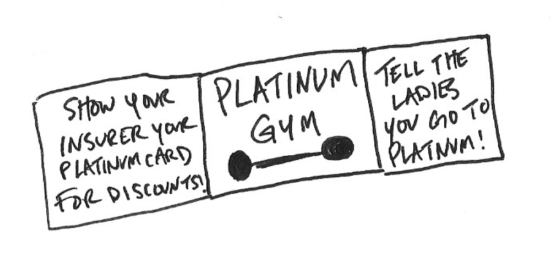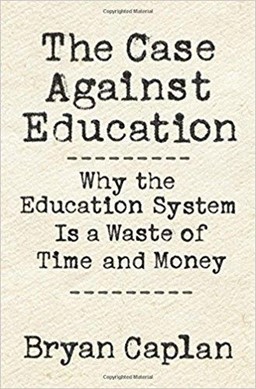The Gist: 4 ways that conservatives might handle monetary policy to grow the economy and limit government.
For 73 years, from 1886 to 1959, you could buy 6.5 ounces of Coca-Cola for a nickel. Customers may have just come off a horse or a jet, but the price did not change. Today, more than six decades later, glancing at my neighborhood grocery shelves, you might pay more than eight nickels for the same amount of the same product.

Figure 1. Though it lacks the pep of the original formula which, of course, contained cocaine. You also would be hard-pressed to find just 6.5 ounces to purchase as the nation’s waistlines have inflated along with its currency.
On a surprisingly related note, you probably dislike writing a check to the government (or having the government directly take money out of your paycheck). If a politician were to advocate for an increase in your personal taxes (rather than the always promised increase in taxes on someone else), you likely would not be happy with them. Worse, if a politician advocated a tax not just on your income but on your wealth, perhaps 2-3% a year, you’d be outraged. And yet that’s not too different from what actually happens with inflation: all of the money in your bank account is worth that much less in Coca-Cola.
Inflation is a hidden tax and an especially clever one because you might think you have more when you in fact have less. But, of course, it does not affect just you. As Murray Rothbard observed, “By creating illusory profits and distorting economic calculation, inflation will suspend the free market’s penalizing of inefficient, and rewarding of efficient, firms. Almost all firms will seemingly prosper.” As F.A. Hayek added, “including some which ought to fail.” Beyond distorting the price system at the heart of our economy, inflation also punishes savers. At its most extreme, during the Weimar Republic, factory workers were given multiple breaks a day to rush out and buy anything they could with their rapidly depreciating currency. But even at its most gentle: the same number in your account gets less than last year. Rationally, you are tempted to spend it now or even borrow something valuable today to be repaid with something less valuable. The benefits accrue to the nation’s largest debtor, the government, who is largely responsible for inflation. But if one day the government can no longer freely determine the value of its debts, then it faces a reckoning with its profligate spending.
“Monetary policy” can sound oblique and intimidating but it’s the least familiar, most important topic in American politics. Beyond its hiding behind technical gobbledygook, it’s probably especially unfamiliar because inflation has been fairly low since the 1980s so people aren’t crying out for reform. If (when?) more noticeable inflation makes a comeback, that’s an opportunity to consider alternatives. The ideal system grows the economy, not the government, by sending clean signals to businesses and consumers while restricting the government’s ability to borrow. As a conservative, here is your menu of options:
- Appoint the right God-King to run the Federal Reserve
This is actually the easiest route under our present system and about as far as conservatives have ever gotten. It helps considerably if you surround the God-King with like-minded nobility (those anonymous other members of the Federal Reserve that 99.9999% of Americans would not be able to pick out of a line up). The idea is that, at least for the time he is in office, the God-King will astutely manage the nation’s money supply to avoid inflation and, in particular, pursue potentially unpopular policies like the classic example of taking away the punch bowl when the party gets too rowdy or, to continue the analogy, refusing to bail out the friend who gets arrested for drunk driving out of fear that it might prompt other friends in the future to not better manage their own drinking.

Figure 2. You might, for example, look to see if there’s some dispositionally unthreatening radical who once served as Ayn Rand’s personal economist.
The trouble is that the President appoints the God-King and Senators confirm him and their job security can be intimately related to the God-King’s decisions, which makes them extremely interested in his being pliable to goosing the economy whenever an election is around a corner (which is always). But that’s not all. Because the nation’s elected representatives want to deliver goodies at minimal cost (for maximum re-electability), they want to borrow ever greater amounts and have a compliant central bank aid them along their merry way.
This is why conservatives tend to dislike the God-King system, which is basically rigged against sound money – indeed, a nickel in 1913, when the Federal Reserve was created, had more purchasing power than a dollar does today. Insofar as the God-King system is preserved, there is no guarantee (in fact, little hope) that you’d get the right God-King (indeed, you might even get one swept up with magical monetary theory).
Importantly, even if you have an extremely smart, fairly independent, very well-meaning God-King, any hint of crisis will tempt him (as fallible as any man) to use the heavy-handed powers of the Fed – to lend out money at generous rates, to buy and sell bonds in vast quantities, to regulate how much reserves banks have – to try to fix the problem. Conservatives generally think that the Fed has no idea what the right interest rate ought to be and should get out of that business altogether to let the market work it out. Conservatives also have very different perspectives from the mainstream on banking reserves (to be discussed later). The power to buy and sell bonds – intimately related to printing more money and the ability of the government to finance its operations – is where there is some acknowledged room for maneuver. But Milton Friedman feared there were excessive, destabilizing lags between a problem like unemployment arising; central bankers discovering and interpreting the problem through statistic collection; and central bankers finally conjuring and applying unpredictable, bespoke, and ham-handed responses. Adeptly deploying sledgehammers with discretion proves impossible.
And yet, among the options we are going to discuss, this is how things will probably work for the foreseeable future. At the very least, conservatives ought to pay a lot closer attention to who gets nominated to the Fed. Indeed, we probably need a Federalist Society for monetary policy. Who knows if any alternative will ever be politically palpable but one thing is significant: the advocacy of alternatives tends to make the God-King behave.

Figure 3. You can replace Fed Soc’s James Madison silhouette logo with a similar one depicting the magnificent mane of Andrew Jackson. Motto: “The Bank, Mr. Van Buren, is trying to kill me, but I shall kill it!” Since a central bank came back, might as well bring back AJ, too.
2. Compel the Federal Reserve to follow a simple rule
The theoretically easiest change to make to our system would be to impose upon the central bank a rule it must follow. The trouble comes quickly in determining what the exact rule ought to be. The Fed currently is supposed to maintain stable prices and “full employment”, the pairing of which actually gives the Fed more discretion as it pursues two goals that tend to require opposite practices. Conservatives tend to favor eliminating the Fed’s goal of reaching full employment not because more people working isn’t great but because the Fed has only so much to do with achieving the dang thing (i.e. is there unemployment because businesses don’t have easy access to capital… or because of regulations or unemployment subsidy or workforce suitability or what?) Nevertheless, Stanford’s John Taylor came up with a mathematical formula that takes into account both goals and spits out a rule that the Fed could follow – but Republican presidents have passed over appointing him God-King because even that limit on discretion has proven too controversial.
Conservatives are far more attracted to a rule that simply tracks stable prices or purchasing power. While attractive in principle (isn’t reducing inflation what we want?), there are two significant problems: first, there is substantial disagreement on what prices the Fed ought to track and how it ought to do so. Second, deflation (i.e. cheaper prices) is not necessarily a bad thing – it could be that the cheaper prices are the results of gigantic productivity improvements. Note two things about this chart: healthcare, education, and housing are major and escalating costs for Americans but are not included in the typical government inflation index; screened devices have dropped their prices like a rock. How should the Fed deal with prices moving in opposite directions? It would be silly for the Fed to print more money so that you always had to spend $1,000 on a television even as the manufacturers figured out how to make it for less and less. Simultaneously, increasing healthcare costs may be partially the result of loose money – but they also are more likely to be reflective of a broken system simultaneously subsidized and regulated by the government. Milton Friedman ultimately concluded that such a rule was “too loose and too imperfect” – and that it, too, would easily invite central bankers to tinker.

Figure 4. Central bankers are constantly self-conscious about deflation and so they often needlessly take “corrective” actions. But when their inflation lasts for more than four years, they don’t bother contacting anyone, they just pile on.
Reflecting his belief that money was responsive to the laws of supply and demand, Milton Friedman instead suggested that the Fed should simply increase the money supply by a small amount every year – equal to the long-run growth rate of the United States, or about 4%. Interestingly, by doing so, Friedman was actually targeting 0% inflation, hoping that the increase in the money supply would be taken up by economic growth. Relatedly, one of the big worries about a monetary rule is that the Fed would not have discretion to react to a crisis. At first glance, Friedman’s rule looks unresponsive but, because a crisis is often accompanied by a shrinkage in the money supply, a constant 4% increase in the nation’s money supply over last year’s total would actually result in a bigger cash infusion to make up the difference. The trouble with this rule is that the money supply is surprisingly difficult to determine and, due to the constant innovation of the banking system, determination gets harder all the time (Of course money is cash in your hands and your savings accounts – but does it include the surrender value of a life insurance policy?) Notably, this is the rule that has come closest to adoption in the United States, as Paul Volcker broke inflation by letting the market set interest rates and instead managing the money supply. But the God-Kings didn’t stick to it.
The newest conservative proposal is for the Federal Reserve to target a certain percentage growth in how much is spent in the economy (nominal gross domestic product). That number would combine both inflation and actual economic growth, thus policy would be attempting to balance the two. While it may suffer from some problems we’ve seen before – errors in statistic collection, lags, perhaps punishing good deflation – it tends to be the presently favored rule. There are still other rules out there – smaller countries might, for example, peg their exchange rate to the currency of a country better at fighting inflation than they. Ideally central banks around the world would have different rules and we’d see what happens to their currencies – but because they are subject to the same political pressures as us, we have not seen that level of experimentation in restraint.
George Selgin argues that “Of countless monetary rules that have been proposed at one time or another, the vast majority would eventually have led to some extremely undesirable outcomes, if not to outright disaster.” He continues, “The argument for a monetary rule isn’t that sticking to such a rule will never have adverse consequences. It’s that the adverse consequences of sticking to a rule may be less serious than those of relying upon the discretionary choices of fallible monetary authorities.” And yet that brings up an important question: even if there was a Constitution for the Fed, would they actually follow it in an emergency when the temptation is greatest to deviate? Milton Friedman mischievously suggested that the Fed be replaced with a computer preprogrammed with the rule – and yet even he suggested that maybe Japan ought not to have such a rule until they break out of their slump. And who is feeding the computer its information? Still, there was once a quasi-automatic standard.

Figure 5. “Grow the money supply by 30% in one year? I’m sorry, Jerome. I’m afraid I can’t do that.”
3. Define the dollar as a certain amount of a commodity (such as gold) and require the government to exchange that commodity for anyone who shows up with a dollar.
The more you think about a fiat currency, the more your head might hurt. The dollar is worth something because you and other people believe it’s worth something and are willing to trade goods and services for it. But that value might change at any time in the future, such that your dollar is worth considerably less (indeed, your nickel might buy 8x less Coca-Cola). Government is responsible for managing the value of the fiat currency but it instead irresponsibly mismanages, mostly because it does not share the same incentives as other users of money. To keep the government honest and limit its ability to infinitely and freely increase the money supply at any time, you could restore the requirement that the government convert the dollar to a preset amount of commodities for anyone who demanded it. This was in fact how paper currency originally worked – the British pound earned its name by once being defined as a pound of silver – the name of the currency was simply a weight and measure, like a yard of yarn.

Figure 6. A dollar was originally an ounce of silver. No longer. But how familiar are you with the Imperial system’s next smallest unit of weight measure? A dollar is now worth an awkward 1.5 drachm. Only a few more years until we have to measure the dollar in grains of silver!
Attractively, a currency backed by commodities almost inherently cannot undergo hyperinflation – and, indeed, has a ceiling on the amount of inflation it can experience based on how much of the stuff there is. For 500 years between 1260 and 1760, English prices rose 0.38% a year, topping out at a whopping 1.28% a year with the massive influx of Spanish colonial silver. Michael Bordo reports that “Between 1880 and 1914, the period when the United States was on the ‘classical gold standard,’ inflation averaged only 0.1 percent per year… It was also a period of unprecedented economic growth with relatively free trade in goods, labor, and capital.” No wonder Andrew Carnegie agreed to sell his company in exchange for fifty year bonds. Little did he know what was to come: the U.S. dollar was once pegged at $20.67 per ounce of gold. In 2020, an ounce of gold crossed $2,000.
The principal trouble for consumers is that a commodity-based currency can undergo short-term volatility in its value. For better or worse, the supply of a commodity-based currency can only be increased by an increase in the commodity. If the economy as a whole grows faster than the money supply, the money will actually increase in value – for advocates of the gold standard, this is a virtue: the increased value invites miners to find more gold and for foreigners to export more gold to the country under the standard. Milton Friedman argues that, before World War I, “The blind, undesigned, and quasi-automatic workings of the gold standard turned out to produce a greater measure of predictability and regularity — perhaps because its discipline was impersonal and inescapable — than did deliberate and conscious control exercised within institutional arrangements intended to promote stability.” Mark Skousen argues that, somewhat intriguingly, the supply of gold grows at about the same rate as historic U.S. growth, even during the big shocks, between 1-5% a year, and that it functions more similarly to Friedman’s favored rule than you might guess, though obviously it would not grow at the same rate every year.
But the short-term volatility of money’s value has a particular problem with sticky wages: nobody likes to get paid less, even if “less” actually buys more. You tend to think in terms of the stated amount – “I’m paid $30,000 a year” not “I can buy this amount of groceries.” Rather than reduce employees’ wages (which are increasingly expensive), companies might fire them and try to hire someone else. But that someone else might not have mentally adjusted for purchasing power themselves and not be willing to work for less than a certain price. It’s a problematic cycle. Murray Rothbard suggests that money inherently can’t have price stability as a commodity but that if businessmen, consumers, employees were interested in it, they could contract around it by tying their payments to some mutually agreed index.
A conventional criticism of a commodity standard is that it wastes resources. Austrian economist Roger Garrison seems to have undermined the critique by demonstrating that after the gold standard was abandoned, contrary to Keynesian predictions, substantial resources were still expended pursuing precious metals – in fact, more than before, because of fears about paper currency being worthless. But even were resources specially expended for the purposes of money, George Selgin argues, “Trying to save resources by forcing a switch from a commodity standard to a fiat standard is like trying to save resources by forcing people to take off the locks on their doors and give them to scrap-metal dealers. It is obvious that the cost of making locks is far less than the cost of losing one’s property.”
The fact that a commodity standard actually employs resources is what keeps the government honest. If the government wants to expand, it can raise taxes (never popular), borrow (usually at a good rate from its central bank), or it can just overprint money (which is cheap and even gives people the temporary illusion of prosperity). The last is the easiest – unless the government is obligated to exchange its money for a commodity, thereby requiring it to use real resources. Notably, this is something the Founders appeared to understand – the U.S. Constitution says that “no state shall… make any thing but gold and silver coin a tender in payment of debts” (alas, unincorporated against the federal government) and also gives Congress the power to “coin” alongside, not coincidentally, the power to fix weights and measures. (For what it’s worth, the Federal Reserve itself is of questionable constitutionality, as are all “independent” agencies)
Though it may sound fairly simple, there are several ways to run a commodity-backed currency and how it’s run affects how “good” it might be. The biggest question is this: does the dollar supply equal the government’s gold supply? For the period that America was supposed to be on the gold standard, the answer was no. The government overprinted dollars on the hope that not everyone would show up at once to claim physical gold. During the Great Depression, the government not only closed the opportunity for citizens to get gold for their dollars, they made private gold ownership illegal. But to at least maintain the fiction we retained the standard, we allowed foreign governments to exchange dollars for gold. But by the time of the Nixon administration, we had overprinted so much that foreigners were rationally demanding gold redemptions for their depreciating dollars. Rather than painfully reign in the money supply, we ended redemption. Given this record, can you really trust the government to maintain the gold standard in a crisis? In the past, the gold standard only really worked because it was considered a source of national shame to abandon it. No longer.

Figure 7. Isaac Newton spent a good portion of his life trying to figure out alchemy when the secret was right in front of him the entire time: as master of the Royal Mint for 30 years, he just needed to convert to a fiat currency and start printing!
If we were somehow convinced of the government’s benevolence (perhaps through a Constitutional amendment), the economic transition would be a challenge because we have overprinted so many dollars. For maximum benefit, gold standard advocates tend to favor 100% backing, but it’s also 100% theoretical. Indeed, Hayek feared that the global economy was too large for everyone to be on the gold standard. The U.S. government has trillions of dollars of gold in its vaults but not as much as the supply of dollars, which means that it would have to expend resources to get more gold (or, dangerously, restore the gold standard at not 100% backing, thereby tempting the government to gamble on lesser and lesser reserves and you’d quickly get into the problem of defining the money supply). There’s even some questions about whether the government could secure enough gold to back our current money supply. An intermediate step might be the U.S. government selling bonds which promised interest payments in gold ounces, but the U.S. government defaulted on its last issue of those, again raising the question of government trustworthiness.
Of course, the dollar does not have to be backed by just gold – gold just happens to have been historically demonstrated over a long time, relatively convenient as a medium of exchange, and somewhat mystical in the public imagination. This last part is fairly intriguing: does gold really have much intrinsic value or does it, like the fiat currency that replaced it, have value because people believe it has value? Some economists have argued for the currency to be backed by a basket of goods, thus limiting the impact of any one commodity’s shortage or glut. But like the problem of determining the price index, what should be in the basket? Relatedly, some supply siders have suggested that the government need not keep any gold at all, just use its powers to try to get an ounce of gold to equal a certain amount of dollars. But, given the short-term volatility of the price and the Fed’s heavy-handed imprecision, implementation would be challenging – and the most significant benefit of a commodity standard is that convertibility keeps the government honest.

Figure 8. Has anyone in the history of rock, paper, scissors ever really thought that paper beats rock?
As Hayek sums up, “The gold standard… served no other purpose than to impose upon the issuers of money such a discipline and, by making its regulation automatic, to deprive them of the power arbitrarily to change the quantity of money. It is a discipline that has proved too weak to prevent governments from breaking it.” But Hayek points to a fourth option: “so long as the management of money is in the hands of government, the gold standard with all its imperfections is the only tolerably safe system. But we certainly can do better than that, though not through government.”
4. Restore private currencies to compete with and perhaps replace the government one.
Fundamentally, if you don’t think the government does an especially good job of anything, why trust it with the fundamental responsibility of maintaining currency? Or, at the very least, why require that the government have a monopoly on currency? As Hayek observed, government’s exclusive control over currency “has the defects of all monopolies: one must use their product even if it is unsatisfactory, and, above all, it prevents the discovery of better methods of satisfying a need for which a monopolist has no incentive.” Friedman thought that the law of supply and demand applied to money in managing the supply – but why not take the perspective further? Whatever you personally want out of money – stable purchasing power, for example – the free market might be able to deliver if left to its own devices. Hayek argued we should have “the control of money in the hands of agencies whose sole and exclusive concern [is] to give the public what currency it liked best among several kinds offered, and which at the same time staked their existence on fulfilling the expectations they had created.”
Why the heck would you want a Deutsche Bank mark rather than the United States government dollar? Well, Deutsche Bank would have to convince you that their currency had value. In the real historical examples of free banking, private currency issuers operated on their own commodity standards, offering to convert their currency to a commodity, usually gold, whenever a customer showed up and demanded it. Essentially, your Deutsche Bank mark is really just a claim on something in Deutsche Bank’s vaults, while your Chase yen is a claim on something in Chase’s vaults, etc. You would accept a salary in DBM because Amazon would accept payment in DBM because ultimately it could be converted into something tangible and useful as a medium of exchange. What sounds novel and scary at first seems a lot more grounded than the system we have.
Hayek strongly believed that the free market would deliver an inflation-resistant currency: “Money is the one thing competition would not make cheap, because its attractiveness rests on it preserving its ‘dearness’.” Free banking allows money to be chosen by consumers – you and me – not imposed by the nation’s largest debtor. Politicians not only can be but want to be irresponsible with a monopoly state currency. Bankers have to be responsible or else no one would use their currency and they might go out of business. Hayek concludes, “Blessed indeed will be the day when it will no longer be from the benevolence of the government that we expect good money but from the regard of the banks for their own interest.”
But just how free ought to be banking? An interesting aspect of historic free banking systems is that they were largely self-regulating. Currency issuers not only competed for consumers with better offers of service and reliability but, due to the magic of redeemability, they also were constantly testing their competitors by redeeming other currencies for their promised gold. In other words, a customer might deposit Chase yen with Deutsche Bank, who would then trade Chase for any marks it held – but if the trade were uneven, Deutsche would demand Chase turn over additional gold. As Lawrence White notes, “The overexpansive bank will discover that its specie reserves are draining away, a situation it cannot let persist.” An aggressive bank might quickly get to the point where no competitor would accept their deposits, no credit card would process their currency, no merchant would accept it, no consumer would use it. Contrast this against the experience of the Savings and Loans industry heavily regulated by the U.S. government: in the 1980s, over 2,800 banks and S&Ls failed.

Figure 9. In a professional soccer match regulated by refs, a light tap inspires an Academy Award caliber performance of a career-ending injury. In a self-regulated street game, players play on, lest they not be able to play again.
The United States once had private currency issuers but over-regulation produced more problems than benefits. Rural banks feared that city banks would gobble them up and so successfully lobbied state governments to impose branching restrictions that limited any bank from opening many locations, sometimes not more than one. As a result, banks were not big nor diversified enough to deal with crises and often failed. Furthermore, state governments attempted to make banks partners by requiring that they carry state debt as their reserves – but that debt often was not worth very much, thus leaving banks with a fundamentally unstable foundation. Finally, entry into the banking industry was tightly controlled by state legislatures, meaning that one had to be a better lobbyist than a banker in order to get a license to print money.
Across the border, Canada’s contemporary free banking experience was a model of stability (and, indeed, their lack of branching restrictions meant that in contrast to the thousands of American banks that failed after 1929 in the Great Depression, zero Canadian banks failed). Scotland had a free banking system for about 150 years with considerably less regulation and, in particular, zero barrier to entry, such that one of the largest ultimate banks began as a linen exporter. Our modern world feels so vastly different from a proliferation of currencies that it can be hard to contemplate. Hayek began thinking about the idea in the context of border towns and tourist centers that took multiple government currencies. Cryptocurrencies give you a bit of insight but ultimately differ in their lack of redeemability for a commodity as well as their very limited present use in purchases of goods and services. But consider your possible enthusiasm for airline miles or credit card points or any number of other practically private currencies in effect today, where you can redeem them for some product, perhaps only at their offering store – but why should they not be allowed to trade on the open marketplace? There’s a small secondary market for gift cards, where Amazon trades basically at par and less popular retailers you can get at a discount. To the degree that you’re afraid the airline will devalue your miles on the open marketplace, that’s the point: you would not want to be paid in such a currency. But if a merchant found that its rewards program was circulating at par around the economy, perhaps because it offered redeemability in a commodity, then it might quickly find out that it’s actually a currency-issuing bank.
Notably, most Scottish banks had a feature that is very unusual in today’s world: they were unlimited liability corporations, meaning that shareholders were completely on the hook for their problems. As you can imagine, this led to a great degree of prudence in their operations. Even when Scottish banks did (rarely) fail, currency holders were made whole. While the purest free bankers believe that banks should be able to choose their liability exposure and then advertise to customers to choose between them accordingly, this is one simple, significant regulation that could head off a lot of future issues while not even requiring any regulators.

Figure 10. As if personal liability was not enough, this was also a time of debtors’ prisons!
The more contentious bank regulation – something that is considered across all four possible ways to reform our monetary system we’ve been discussing – is how to deal with regulating bank reserves. Conservatives have tended to believe that the financial system relies on a myth that money can be in two places at once – you have your money in a bank account that you can withdraw entirely at any time, but the bank is simultaneously using that money to lend out to others. That’s why a run can ruin a bank. Presently, the government requires that banks hold a certain relatively small percentage (about 10%) of their outstanding loans in reserve in case depositors need it and, through the FDIC, it also guarantees that, eventually, accounts under a certain size will be restored to full value by taxpayers in case of the bank’s failure.
Conservatives have tended to consider this a pre-bailout inviting banks to moral hazard and have for a long time favored 100% reserve banking (also called single-purpose banking). Banks would be split between two functions, warehouses for money and lenders. You could either have total access to all of your money at any time (as if it was in a safe deposit box) or you could agree to eliminate your access in exchange for an interest payment (as if you bought a bond). An unpopular feature of this is that you may have to pay to store your money – but perhaps not if banks ran it as a loss leader to attract customers. But conservatives have nevertheless advocated for the position as a way to stabilize the banking system (if your bank must keep 100% of your money, no reason to make a run on on it) and (especially for Friedman) control the money supply (banks no longer have discretion on what proportion of their reserves to lend out). Notably, no lender of last resort is necessary.
If banks were legally able to issue their own currencies, the outstanding currencies would be, from an accounting perspective, very similar to the liabilities that banks possess in savings accounts. The freest bankers insist that the government really ought to have a 0% reserve requirement and let competition work out the problems. Notably, in the Scottish system, this occasionally meant that banks were down to as little as 2% of their reserves – and, as a result, they sometimes instituted policies that meant customers might have to wait 6 months from a redemption request in order to get their gold. Interestingly, though this delayed redeemability was unpopular and attracted some limited regulation, the notes circulated at par in the interim and were indeed redeemed as promised. While no restrictions on reserves worked for the Scottish banking system, it might have been due to other factors like their unlimited liability and (eventual) convertibility to gold. If we had instant totally free banking today, there might be more risk if consumers were prepared to accept, say, cryptocurrency, as a reserve. Compared to our current system, though, Selgin suggests, “If consumers were willing to accept a fiat standard voluntarily, banks could induce them to do so by offering higher interest rates than competitors who still held commodity-money reserves, reflecting the lower operating costs of not having to hold non-interest earning assets. If this does not happen, one must conclude that consumers perceive a commodity standard as a higher-quality good than a fiat standard.” Notably, if there is no reserve requirement, there is dramatically less pressure on having the exact amount of resources to match the money supply.
Mark Skousen asks, “On a practical level, who wants to deal with potentially dozens of different kinds of privately issued bank notes?” Hayek responds, “If the public understood what price in periodic inflation and instability it pays for the convenience of having to deal with only one kind of money in ordinary transactions, and not occasionally to have to contemplate the advantage of using other money than the familiar kind, it would probably find it very excessive.” The point is that there is no natural monopoly in currency where competitors are allowed to produce. Hayek continued, “in the field of money I do not want to prohibit government from doing anything except preventing others from doing things they might do better.” Sweden for seventy some years had a system of begrudging free bank acceptance in addition to a government-preferred bank with a very explicit policy that no private bank would be bailed out. But the government favoritism backfired: the private banks were so responsible that none failed – indeed, despite the facts that their currency was not legal tender and was actually taxed, they were so successful at attracting consumers that the preferred bank successfully lobbied that it could only survive if given a monopoly on currency issue, thus ending free banking in Sweden.

Figure 11. On a practical level who wants to deal with potentially dozens of different kinds of private grocery stores or newspapers or anything else free enterprise competitively offers? Very probably: You.
I must conclude with the sad story of the Liberty Dollar. For nine years, Bernard von NotHaus sold tens of millions of dollars in gold and silver medallions to hundreds of thousands of Americans who either could take delivery outright or receive a certificate that allowed them to redeem their precious metals at any time. The George W. Bush administration responded by raiding his vault, seizing nine tons of precious metals (some medallions depicting Ron Paul), publicly accusing von NotHaus of “domestic terrorism,” and trying him for counterfeiting. Tragically amusing, his lawyer insisted “the last thing Mr. von NotHaus wanted was for Liberty Dollars to be confused with coins issued by the United States government.” We shall see what happens to cryptocurrency, but the U.S. government does not appear to be interested in currency competition in the near future.
As stated near the beginning, the ideal monetary system sends as clean signals as possible to business and consumers while restricting government’s ability to grow. If government’s growth was fueled by central banks, then reverse engineering the process means eliminating the central bank. As Hayek noted, “There can be little doubt that the spectacular increase in government expenditure [-] with governments in some Western countries claiming up to half or more of the national income for collective purposes [-] was made possible by government control of the issue of money.” So, “Unless we restore a situation in which governments (and other public authorities) find that if they overspend they will, like everybody else, be unable to meet their obligations, there will be no halt to this growth which, by substituting collective for private activity, threatens to suffocate individual initiative.” Indeed, “Under the prevailing form of unlimited democracy, in which government has power to confer special material benefits on groups, it is forced to buy the support of sufficient numbers to add up to a majority. Even with the best will in the world, no government can resist this pressure unless it can point to a firm barrier it cannot cross.”
Adam Smith, the father of modern economics, wrote eloquently about the power of capitalism to bring us wealth. Perhaps not surprisingly, he lived right in the middle of Scottish free banking with redeemability for commodities. At the time that he wrote, he considered his advocacy of free markets practically utopian, and yet within the coming decades Britain embraced most of his agenda. If you desire limited government and sound money, don’t be deterred by what is seemingly politically possible. Fight for the firm barrier that government cannot cross.
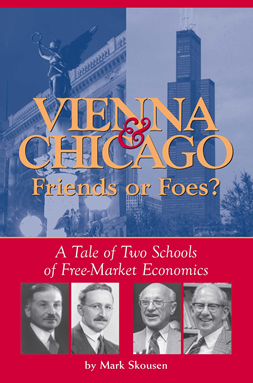
Figure 12. For background about conservative economic approaches, check out Mark Skousen’s Vienna & Chicago: Friends or Foes? Chicago tends to prefer a rule-based solution to our monetary predicaments, though Milton Friedman softened on gold and free banking in his later years. Austrians tend to be split between those who favor a gold standard and those who favor free banking. See my two part review: first, about the history of how the schools came to be; second, about what their differences are. For a primer on what the Fed actually does, Steven Horwitz’ introduction from the Mercatus Center is quite good, though the Fed’s response to covid will require an update.

Figure 13. For more details on a monetary rule, check out Milton Friedman’s Capitalism and Freedom, which tackles a lot of topics but also explains his preference for a rule slowly growing the money supply. You should also read Scott Sumner’s case for NDGP targeting. You can also read George Selgin’s caution about monetary rules in this blog post.
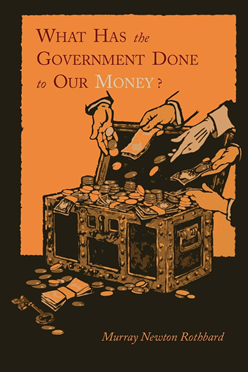
Figure 14. For more details about a commodity based standard, check out In Search of a Monetary Constitution, an anthology of various bright conservative scholars arguing about different potential monetary systems in 1962. Ben Graham favors a basket of goods, James Buchanan playfully argues for a brick standard, someone else argues for a fractional reserve gold standard, and Murray Rothbard argues for a 100% gold standard (and there are still others, including Milton Friedman, arguing for various non-commodity standards). Though this book is quite good, it can be hard to pin down. If you’re eager to read something on this, try Murray Rothbard’s What Has the Government Done to Our Money?, which includes both his contribution to In Search of a Monetary Constitution and an additional essay.

Figure 15. For more details on free banking, check out F.A. Hayek’s Denationalization of Money; Lawrence White’s Free Banking in Britain; and George Selgin’s The Theory of Free Banking. Hayek revitalized interest in free banking and his book is a smart, speculative take on what free banking might look like. White did significant research into how free banking worked in practice during his longest run: some 150 years in Scotland. Selgin surveys other historical examples but spends most of his book digging deep into the theory of how it might work. Notably, the works of White and Selgin are available for free!
Thanks for reading! If you enjoyed this review, please sign up for my email in the box below and forward it to a friend: know anyone interested in economics or history? How about someone who wants limited government? Or do you know anyone who ever uses money to pay for things?
I read over 100 non-fiction books a year (history, business, self-management) and share a review (and terrible cartoons) every couple weeks with my friends. Really, it’s all about how to be a better American and how America can be better. Look forward to having you on board!







